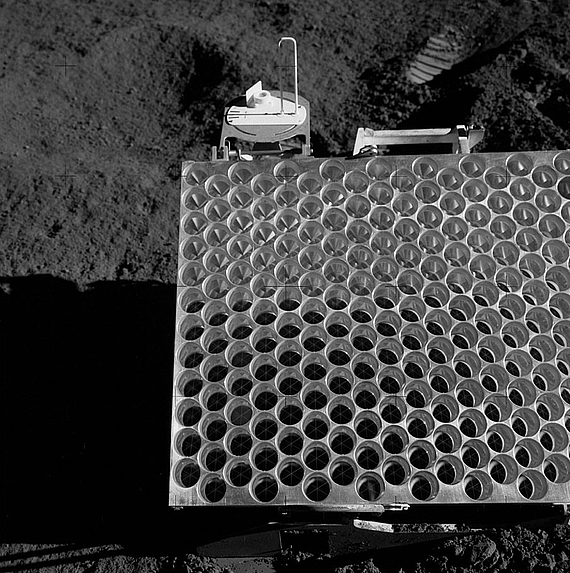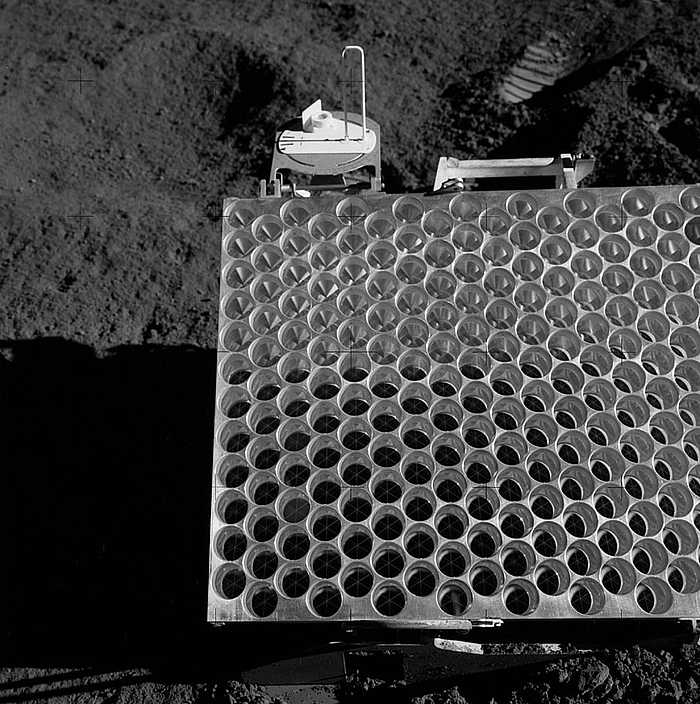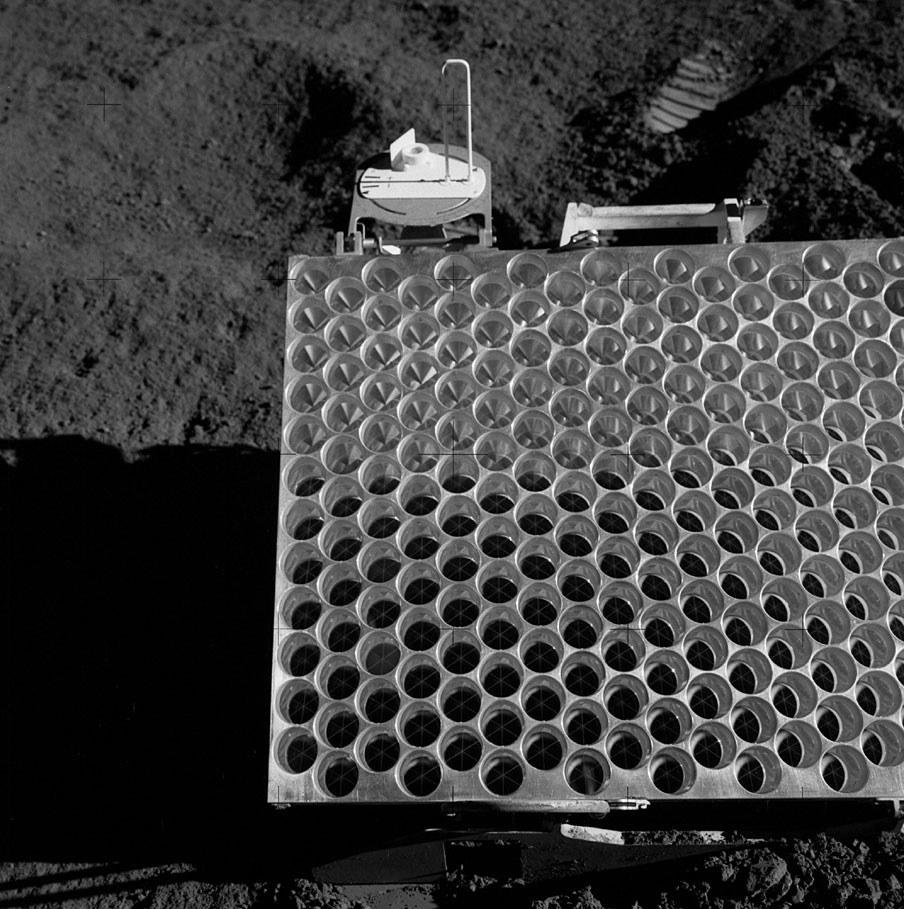

 ©
Nasa/ D. Scott
©
Nasa/ D. Scott
The huge distance and signal loss due to beam divergence in the atmosphere and from reflector diffraction effects makes LLR challenging and only a few observatories on Earth are capable to track the Moon. Today, only three observatories observe the Moon regularly: Grasse (France), APOLLO (USA) und Matera (Italy).
Since the earliest measurement in 1969 the accuracy has improved from several decimeters to just a few millimeters at the newest LLR-observatories. With LLR a number of parameters can be estimated which provide an insight into the Earth-Moon system. These include the following topics:
- Reference systems, e.g. station- and reflector coordinates, tie of the Lunar orbit to VLBI-based ICRF, the determination of Earth orientation parameters and their comparison with other independent techniques;
- Dynamics of the Earth-Moon system, e.g. orbit and libration parameters, mass of the Earth-Moon system and secular tidal acceleration;
- Physics of the Moon, e.g. the interior structure of the Moon, dissipation effects;
- Gravitational physics/tests of Einstein’s theory of relativity, e.g. the principle of equivalence or a possible temporal variation of the gravitational constant.
The Institute of Geodesy acts together with the Forschungseinrichtung Satellitengeodäsie (FESG) at TU München as a Lunar Analysis Center of the International Laser Ranging Services (ILRS). It also cooperates with the Analysis Working Group of ILRS in order to establish consistent standards and results at the ILRS.
Contact

 © INTERGEO 2024, HINTE Expo & Conference GmbH
© INTERGEO 2024, HINTE Expo & Conference GmbH
30167 Hannover

 © INTERGEO 2024, HINTE Expo & Conference GmbH
© INTERGEO 2024, HINTE Expo & Conference GmbH




